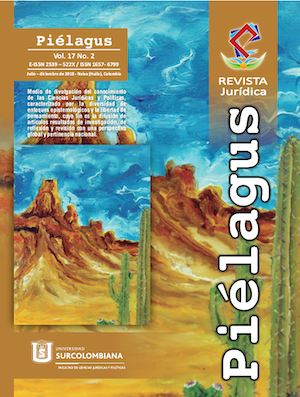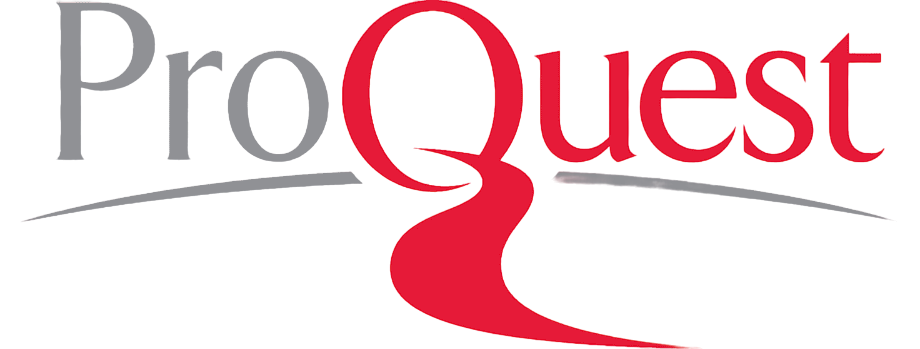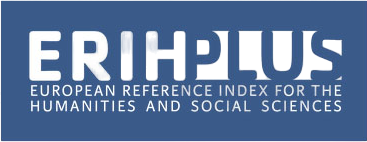Un enfoque gerencial para el desarrollo coherente del derecho del desarrollo sostenible
A managerial approach for the coherent development of sustainable development law El Proyecto de Expansión de Electricidad de Kenia ante los mecanismos internacionales de rendición de cuentas del Banco mundial y del Banco Europeo de Inversiones
##plugins.themes.bootstrap3.article.main##
Los órganos judiciales a nivel internacional han proliferado en los últimos cincuenta años en un proceso que se ha considerado "casi anárquico" (Guillaume, G., 2000), creando un riesgo de inconsistencia en sus decisiones que podría poner en peligro el sistema de derecho internacional; los organismos cuasi judiciales como los mecanismos internacionales de rendición de cuenta de los bancos multilaterales de desarrollo no se salvan de este fenómeno legal. Aun cuando tienen diversos procedimientos y jurisdicciones y operan con diferentes conjuntos de salvaguardas ambientales y sociales, pueden enfrentar escenarios fácticos similares, especialmente en el caso de la cofinanciación.
El reciente Proyecto de Expansión de Electricidad de Kenia presentado ante los mecanismos de rendición de cuentas del Banco Mundial y del Banco Europeo de Inversiones ilustra que, a través de un enfoque gerencial, se pueden evitar resoluciones potencialmente conflictivas. Este artículo pretende evidenciar que los órganos cuasi judiciales pueden constituir una fuente de inspiración para el desarrollo integrado del derecho internacional.
Descargas
##plugins.themes.bootstrap3.article.details##
I. Abi-Saab, G. (1999) “Fragmentation or Unification: Some Concluding Remarks” 31 NYU Journal of International Law and Politics pp. 923-930.
II. Bank Information Center and fifteen other NGOs (2017). “RE: Intimidation of Indigenous Communities affected by Geothermal Projects in Kenya”, letter to the EIB, the World Bank and six other donors (March 3rd), available at: https://bankwatch.org/wp-content/uploads/2017/04/letter-IFIs-KenGen-lawsuit-03Mar2017.pdf.
III. Barstow-Magraw, D.; Hawke, L. D. (2007). “Sustainable Development’, in D. Bodansky, J. Brunnée, E. Hey (eds.), The Oxford Handbook of International Environmental Law (Oxford University Press, Oxford).
IV. Bekhechi, M. A. (1999). “Some Observations regarding Environmental Covenants and Conditionalities in World Bank Lending Activities”. Max Planck Yearbook of UN Law.
V. Boisson de Chazournes, L. (1999). “Public participation in decision-making: the World Bank Inspection Panel”, in E. Brown Weiss, A. Rigo Sureda, L. Boisson de Chazournes (eds.), The World Bank, international financial institutions, and the development of international law: a symposium held in honor of Ibrahim F.I. Shihata, March 22, 1999 (Washington: The American Society of International Law).
VI. Boisson de Chazournes, L. (2000). “Policy Guidance and Compliance: the World Bank Operational Standards’, in D. Shelton (ed.), Commitment and Compliance: The Role of Non-binding Norms in the International Legal System (Oxford University Press, Oxford).
VII. Boisson de Chazournes, L. (2005) “The World Bank Inspection Panel: about Public Participation and Dispute Settlement” in T. Treves, A. Fodella. A. Tanzi, M. Frigessi di Rattalma (eds.), Civil Society, international courts and compliance bodies (T.M.C. Asser Press, The Hague).
VIII. Boisson de Chazournes, L. (2015). “Les Panels d’Inspection’, in Société Française pour le Droit International, Colloque de Lyon - Droit international et développement (Editions A. Pedone, Paris, 2015).
IX. Boisson de Chazournes, L. (2017). “Plurality in the Fabric of International Courts and Tribunals: The Threads of a Managerial Approach”, 28 The European Journal of International Law no. 1 (2017) pp. 13-72.
X. Bradlow, D.; Naudé-Fourie, A., (2013). “The Operational Policies of the World Bank and the International Finance Corporation: Creating Law-Making and Law-Governed Institutions?” 10 International organizations Law Review.
XI. Bradlow, D. (2017). “Using a Shield as a Sword: Are International Organizations Abusing Their Immunity”, 31 Temple International & Comparative Law Journal no. 1 (2017).
XII. Bradlow, D. D. (2017). “Using a Shield as a Sword: Are International Organizations Abusing Their Immunity”, 31 Temple International & Comparative Law Journal no. 1.
XIII. Charney, J. I. (1998). “Is International Law Threatened by Multiple International Tribunals?” 271 Recueil des Cours.
XIV. Consolidated Version of the Treaty on the Functioning of the European Union (2012) Official Journal of the European Union, Art.309
XV. Dann, P. (2013). The Law of Development Cooperation, A Comparative Analysis of the World Bank, the EU and Germany (Cambridge, UK and New York, USA: Cambridge University Press, 2013).
XVI. De Moerloose, S. (2018). “Sustainable Development and the Use of Borrowing State Frameworks in the New World Bank Safeguards”, 51 Verfassung und Recht in Übersee / Law and Politics in Asia, Africa and Latin America.
XVII. De Moerloose, S. (2015). “The World Bank’s Sustainable Development Approach and the Need for a Unified Field of Law and Development Studies in Argentina” (December) 8:2 Law and Development Review.
XVIII. Di Leva, (1997). “International Environmental Law and Development” (1997–1998) 10 The Georgetown International Environmental Law Review.
XIX. EIB, Complaints Mechanism Principles, (2012). Terms of Reference and Rules of Procedure (February 2010, amended in April and October), Art. II.1.1.2, , 17 June 2016
XX. EIB Complaints Mechanism, (2015). Conclusions Report, Olkaria I and IV Kenya (Complaint SG/E/2014/07-08, 11 November), para. 1.1, , 12 July 2016.
XXI. EIB, (2009). EIB Statement of Environmental and Social Principles and Standards. Background para. 10, , 1 July 2016
XXII. EIB, (2009). European Investment Bank. The EIB Statement of Environmental and Social Principles and Standards. Available at: https://www.eib.org/attachments/strategies/eib_statement_esps_en.pdf
XXIII. EIB, (2013). Environmental and Social Handbook (version 9.0 of 02/12/13), , 4 July 2016.
XXIV. EIB, (2016). Frequently Asked Questions, How does EIB differ from commercial banks, , 1 July 2016.
XXV. Freestone, D. (2012). Legal Aspects of Sustainable Development: The World Bank and Sustainable Development: Legal Essays (Martinus Nijhoff Publishers, The Netherlands).
XXVI. Guillaume, G. (2000). Judge, President of the ICJ. “The proliferation of international judicial bodies: The outlook for the international legal order”, Speech to the Sixth Committee of the General Assembly of the United Nations (27 October).
XXVII. Hachez, N; Wouters, J. (2013). “The Role of Development Banks: The European Investment Bank’s Substantive and Procedural Accountability Principles with Regard to Human Rights, Social and Environmental Concerns’, in O. De Schutter, J. Swinnen, J. Wouters (eds.), Foreign Direct Investment and Human Development (Routledge, London, New York).
XXVIII. Handl, G. (1998). “The Legal Mandate of Multilateral Development Banks as Agents for Change toward Sustainable Development”. P.p. 92:4. The American Journal of International Law pp. 642-665.
XXIX. Head, J. W. (1991). “Environmental Conditionality in the Operations of International Development Finance Institutions”. The Kansas Journal of Law and Public Policy.
XXX. Hunter, D. B. (2008). “Civil Society Network and the Development of Environmental Standards” (Winter 2008) 8:2 Chicago Journal of International Law.
XXXI. Shihata, I. F. I. (2000). The World Bank Inspection Panel: In Practice (Oxford University Press, New York).
XXXII. IBRD, (2012). Articles of Agreement (as amended effective 27 June 2012), Art. 4. X, , 1 April 2016.
XXXIII. IDA, (2016). IDA Articles of Agreement, Art. V, Section 6, , 15 May 2016.
XXXIV. Kathigamar-V.S.K., N. (1995). “The World Bank Inspection Panel Court or Quango?”, 12 Journal of International Arbitration no. 2.
XXXV. K. Lenaerts, P. Van Nuffel, European Union Law (Sweet & Maxwell, London, 2011).
XXXVI. Kenya Electricity Expansion Project (IDA Credit Agreement 4743-KE); World Bank, “World Bank Approves US$330 Million to Expand Electricity Access to Kenyans” (27 May 2010), available at: http://www.worldbank.org/en/news/press-release/2010/05/27/world-bank-approves-us330-million-expand-electricity-access-kenyans.
XXXVII. Kingsbury, B. (1999). “Operational Policies of International Institutions as Part of the Law-Making Process: The World Bank and Indigenous Peoples’, in G.S Goodwin-Gill and S. Talmon (eds.), The Reality of International Law: Essays in Honour of Ian Brownlie (Clarendon Press, Oxford).
XXXVIII. Kuo, L. (2017). “Let there be light: Kenya’s national electrification campaign is taking less than half the time it took America”, Quartz Africa (16 January), available at: https://qz.com/882938/kenya-is-rolling-out-its-national-electricity-program-in-half-the-time-it-took-america/.
XXXIX. Macekura, S. J. (2015). Of Limits and Growth: The Rise of Global Sustainable Development in the Twentieth Century (Cambridge University Press, New York).
XL. Mbengue, M. M.; De Moerloose, S. (2016). “Quasi-Judicial Dialogue: Kenya Electricity Expansion Project before the World Bank and the European Investment Bank’s International Accountability Mechanisms”, EJIL: Talk! –Blog of the European Journal of International Law (9.11.2016), available at: http://www.ejiltalk.org/quasi-judicial-dialogue-for-the-coherent-development-of-international-law/#more-14715.
XLI. Mbengue, M. M.; De Moerloose, S. (2017). “Multilateral Development Banks and Sustainable Development: On Emulation, Fragmentation and a Common Law of Sustainable Development”, 10 Law and Development Review no. 2 (October 2017).
XLII. Mitzman, E., (2010). “The Proliferation of Independent Accountability Mechanisms in the Field of Development Finance”, 14 Jean Monnet Working Paper (2010).
XLIII. Riegner, M. (2015). “Towards an International Institutional Law of Information”, 12 International Organizations Law Review no. 1 (2015).
XLIV. MoU, (2008). Memorandum of Understanding between the European Ombudsman and the European Investment Bank concerning information on the Bank’s policies, standards and procedures and the handling of complaints, including complaints from non-citizens and non-residents of the European Union” (9 July 2008), , 17 June 2016.
XLV. Nanwani, S. (2014). “Directions in Reshaping Accountability Mechanisms in Multilateral Development Banks and Other Organizations” 5:2 Global Policy.
XLVI. Nanwani, S., (2014). “Holding Multilateral Development Banks to Account: Gateway and Barriers’(2008) 10 International Community Law Review.
XLVII. Naudé-Fourie, A. (2009). The World Bank Inspection Panel and Quasi-Judicial Oversight, in Search of the ‘Judicial Spirit’ in Public International Law (Utrecht: Eleven International Publishing).
XLVIII. Naudé-Fourie, A. (2015). “Expounding the Place of Legal Doctrinal Methods in Legal-Interdisciplinary Research, Experiences with Studying the Practice of Independent Accountability Mechanisms at Multilateral Development Banks”, 8 Erasmus Law Review no. 3.
XLIX. Park, S. (2005). “Norm diffusion within international organizations: a case study of the World Bank” (2005) 8:2 Journal of International Relations and Development pp. 122-134.
L. Statute of the European Investment Bank (version dated 1 July 2013), Art. 1, , 29 June 2016.
LI. Sands, P.; Peel, J.; Fabra, A., & Mackenzie, R. (2012). Principles of International Environmental Law (3rd ed. Cambridge University Press, Cambridge).
LII. Tamanaha, B. Z. (2011). “The Primacy of Society and the Failures of Law and Development” 44 Cornell International Law Journal, pp. 209-248.
LIII. The Inspection Panel at the World Bank, Operating Procedures (April 2014 with Annex added February 2016), paras. 67-69, , 17 June 2016.
LIV. The Presidency, Official Office of the President, “Access to Electricity”, available at: http://www.president.go.ke/projects/access-to-electricity, last accessed 4 December 2017.
LV. Tignino, M., (2016). “Quasi-judicial bodies” in C. Brolmann, Y. Radl (eds.), Research Handbook on the Theory and Practice of International Lawmaking (Cheltenham: Edward Elgar)
LVI. Trubek D. M., & Galanter, M. (1974). “Scholars in Self-Estrangement: Some Reflections on the Crisis in Law and Development Studies in the United States” Wisconsin Law Review, pp. 1062-1102.
LVII. Voigt, C. (2009). Sustainable Development as a Principle of International Law: Resolving Conflicts between Climate Measures and WTO Law (Martinus Nijhoff Publishers, Leiden, Boston, 2009).
LVIII. Wade, R. (1997). “Greening the Bank: The Struggle over the Environment, 1970-1995’, in Kapur, D., Lewis, J. P., & Webb, R. (eds.), The World Bank: It’s First Half Century, Volume 2: Perspectives (Brookings Institution Press, Washington D.C.).
LIX. Webb, P. (2013). International Judicial Integration and Fragmentation (Oxford University Press, Oxford).
LX. Wong, Y., & Mayer, B. (2015). “The World Bank’s Inspection Panel: An Tool for Accountability?’, in J. Wouters, A. Ninio, T. Doherty, H. Cissé, The World Bank Legal Review Volume 6: Improving Delivery in Development: The Role of Voice, Social Contract, and Accountability (International Bank for Reconstruction and Development / The World Bank, Washington).
LXI. World Bank Inspection Panel, Report and Recommendation on Request for Inspection, Kenya Electricity Expansion Project -P103037- (2 July 2015), para. 12, p. 3, available at: http://ewebapps.worldbank.org/apps/ip/PanelCases/97-%20Eligibility%20Report%20-%20Inspection%20Panel%20-%20Kenya%20Electricity%20Expansion%20Project.pdf.
LXII. World Bank Inspection Panel, Report Kenya Electricity Expansion Project (2 July 2015), paras. 1-3, , 12 July 2016.
LXIII. World Bank, (1999). Clarification of the Board’s Second Review of the Inspection Panel, , 17 June 2016.
LXIV. World Bank, Grievance Redress Service (GRS) Annual Report 2015, p. 1, available at: pubdocs.worldbank.org/en/489201458312157191/GRSAnnualReport2015.pdf#zoom=80.
LXV. World Bank, “News Release, Kenya Electricity Expansion Project: World Bank Board Approves Action Plan for Kenya Inspection Panel Case” (16 February 2017), available at: http://ewebapps.worldbank.org/apps/ip/PanelCases/97-News%20Release-16%20Feb%202017.pdf.
LXVI. World Bank, News Release: World Bank Approves Mediation to Resolve Issues in Kenya Inspection Panel Case, 23 October 2015, , 19 July 2016.
LXVII. World Bank, Operations Manual, , 29 June 2016.
LXVIII. World Bank, Review of the Resolution Establishing the Inspection Panel 1996 Clarification of Certain Aspects of the Resolution, , 17 June 2016
LXIX. World Bank, The New Environmental and Social Framework, , 25 August 2016.
LXX. World Bank, The World Bank Inspection Panel (IBRD Resolution No. 93-10, IDA Resolution No. 93-6, 22 September 1993) , 17 June 2016.
LXXI. World Bank, IBRD, IDA, Addendum to Management Report and Recommendation in Response to the Inspection Panel Investigation Report Kenya Electricity Expansion Project (Loan no. p103037), paras. 14, 17 available at: http://documents.worldbank.org/curated/en/407691481338889626/pdf/1481338888515-000A10458-Kenya-Addendum-11282016.pdf.

















